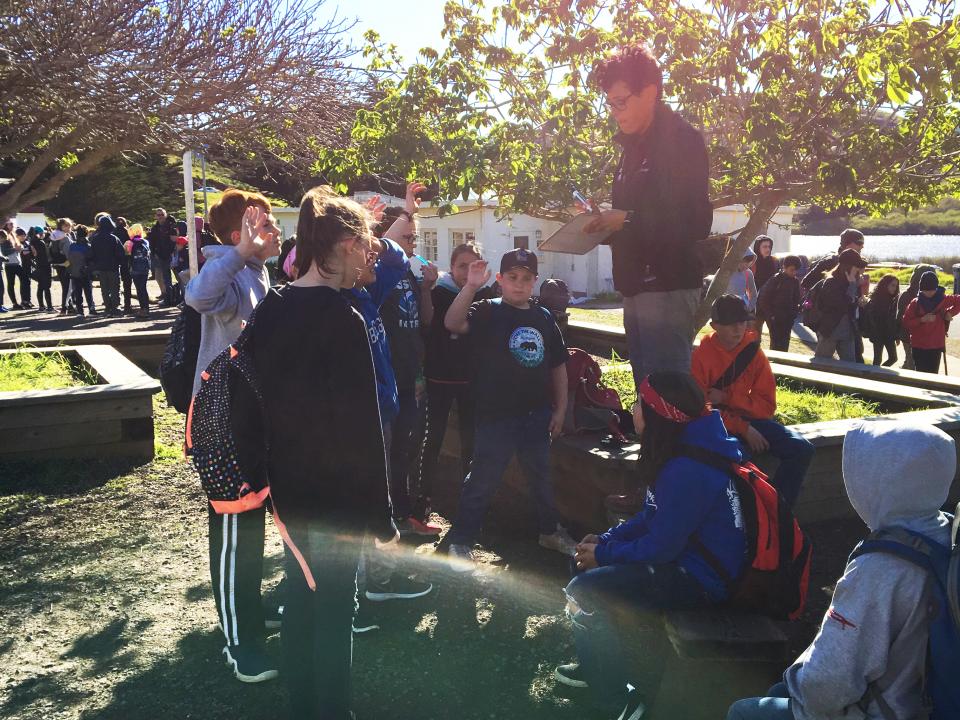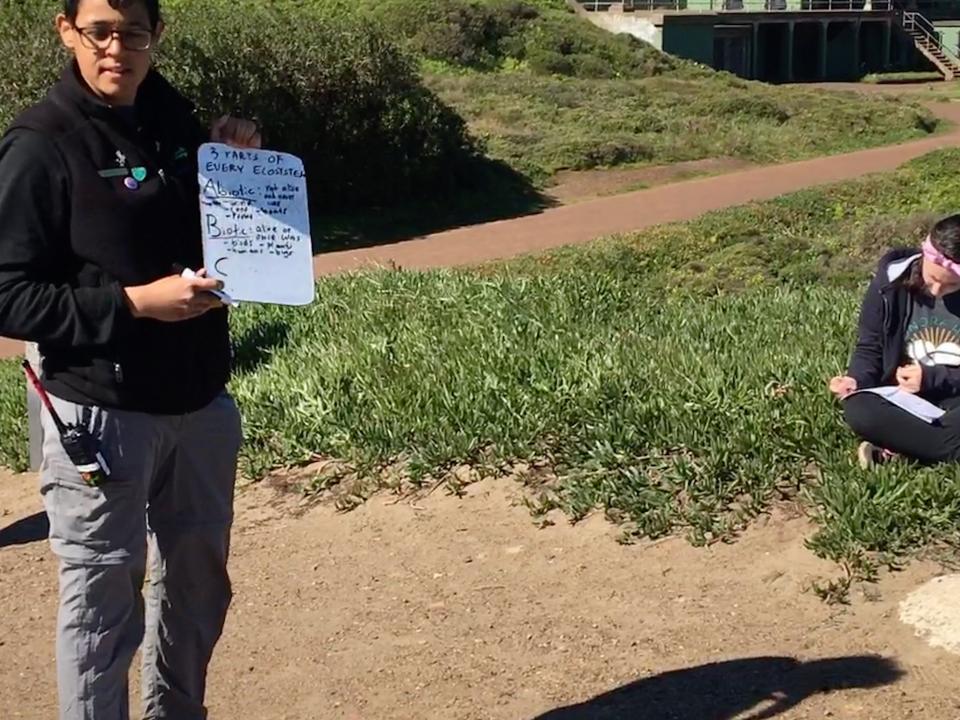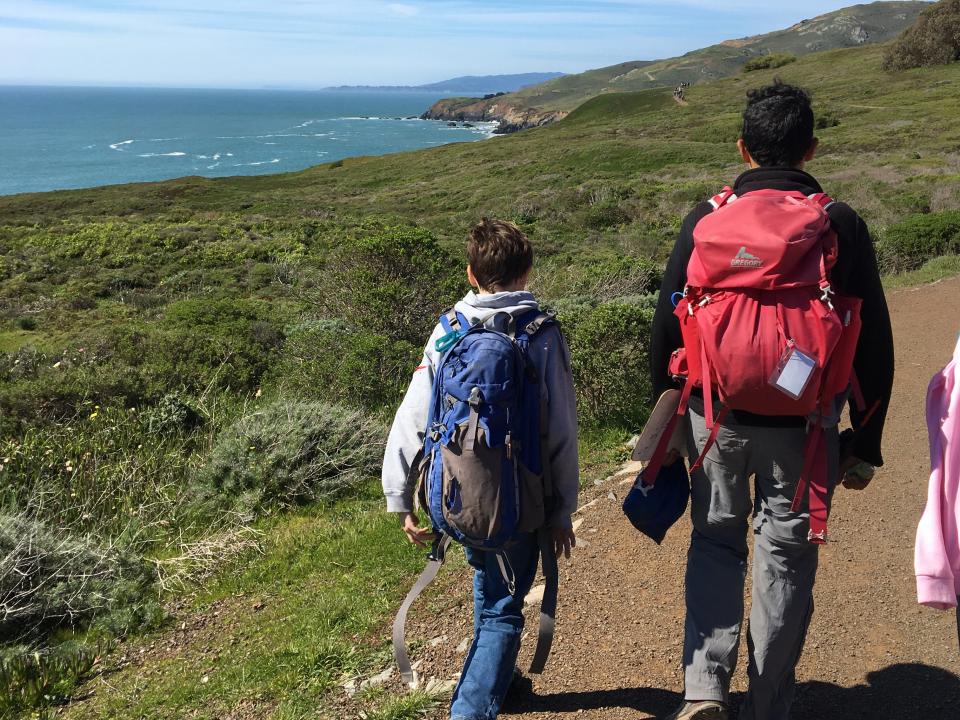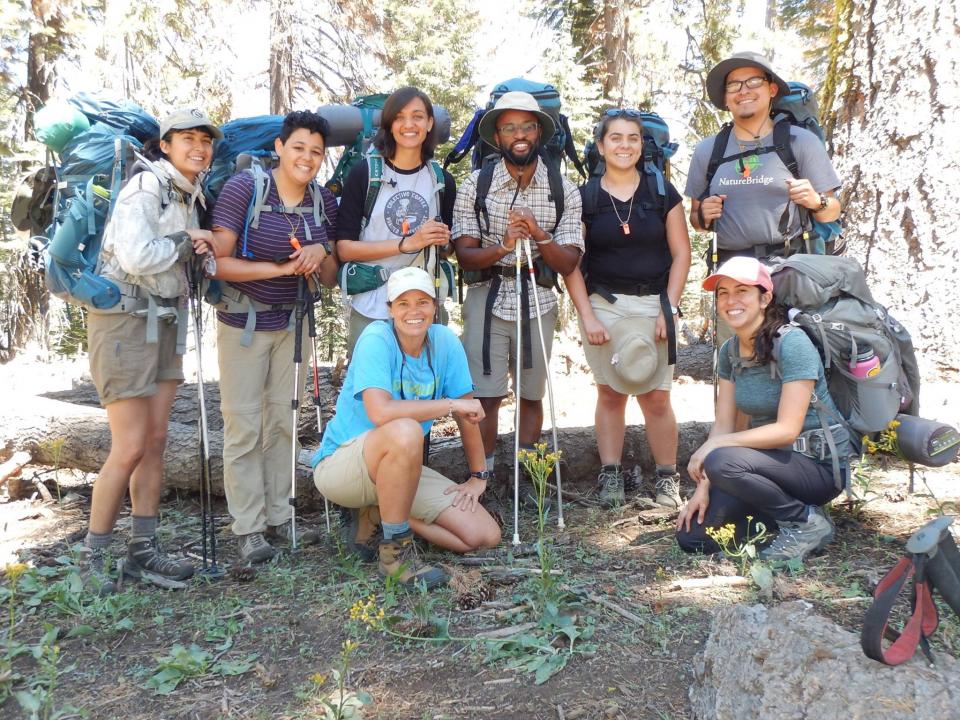Educator Spotlight: Marley Pierce
Golden Gate educator Marley Pierce joined the NatureBridge team in the fall of 2017 after a summer in Yosemite as part of the Educator Development Program (EDP). This experience paralleled her previous work in diversity and inclusion efforts in the educational setting and emphasized the importance of representation in the outdoor world.
With the goal of increasing representation of those who have had historical and systemic barriers to the field of outdoor education, EDP provided Marley with a platform to combine her love of adventure with her passion for increasing access to the outdoors.
She now spends her days in the Marin Headlands, sharing her zest for the natural world, knowledge of the environment and commitment to diversity with NatureBridge students. After spending a full day in the field with Marley, I had the chance to ask her a few more questions:
What sparked your connection to the outdoor world? What about nature and our parks continue to inspire you? #
When people find out I grew up in Colorado oftentimes they proceed to ask me about my experience with skiing, snow sports or hiking as a child. While my family would definitely go on road trips and admire the beauty of the Rocky Mountains, we did not grow up doing an "intense" mountain sport every weekend or summer. I think this is partially what inspires me to lift up and celebrate the seemingly mundane or less dramatic experiences of the outdoors.
Through systemic and social barriers, not everyone has access to national or state parks in the same way. Beyond working to remove these barriers, I think acknowledging the validity of walking to school, riding a bike through an urban neighborhood or even just stopping to watch some birds pecking around a bus stop is so important. Nature is not just in our parks or dramatic Instagram posts, it's in the small things we see everyday, even in city centers.
Growing up, what was your own relationship with outdoor learning? #
As a kid, my family generally could not afford camps, which meant that my sisters and I spent summers and time after school finding ways to entertain each other. I was fortunate to grow up on a block with other kids my age so my introduction to outdoor play came through making mud pies, seeing who could run barefoot across the hot asphalt of the street quickest, sending toy cars full of action figures careening down driveways and "going fishing," which entailed sitting on the corner of our block with gummy worms tied to licorice ropes we had bought at the neighborhood market.
Silly as they may sound, these memories highlight why I've continued to play outside since childhood: The outdoors can spark imagination, camaraderie and joy.Marley Pierce
What made you decide to work for NatureBridge? #
Prior to NatureBridge I spent my time as an elementary special education teacher, as well as three years at an independent high school working in student life and diversity and inclusion efforts. While I loved getting to develop long-term relationships with students over the course of a whole year, I was deeply curious about the potential of learning beyond the walls of a classroom. Most specifically, I wanted to see what it could look like to have conversations with students around identity, equity and compassion in an outdoor setting.
To hone my skills in the outdoor setting, I first joined NatureBridge through the Educator Development Program, which allowed me to spend the summer with other educators of color in Yosemite. So often it feels like you have to look a certain way and own certain gear to call yourself a "hiker" or even simply participate in the outdoors. Spending that summer surrounded by other folks who were actively trying to put a different, more accessible face to outdoor exploration excited me.
What is the best part about being a NatureBridge educator? #
Generally having the flexibility to incorporate play into my programs. Oftentimes, so much of what students enjoy the most is developing a sense of connection to our park through loosely structured exploration. I try to always make sure students spend at least a solid hour getting to play at the beach on their first day.
In my experience, feeling joy and curiosity builds connection to a place, which can lead to appreciation, and ultimately intentional action to respect and protect that natural space.Marley Pierce
Do you have a favorite moment from the field that sticks with you? #
So many! Having an amazing impromptu conversation with two seventh grade boys about toxic masculinity at their school; a student who "accidentally" left a giant bag of hot cheetos in his backpack so decided to share them with all of us since he had to either finish them or throw them out in the remaining two minutes before he moved into his dorm; students chasing huge piles of sea foam that looked like snow; tearing up as I watched a Marine Mammal Center release on the beach only to realize every student and chaperone in my group was also crying as Winter the Sea Lion returned to her home in the ocean; oh—and getting an email from a fifth grade student that she had not only purchased the same stuffed animal I had used with her group, but that she was naming it Marley!
What do you hope is the biggest takeaway for students in your Golden Gate program? #
To patiently seek understanding. Whether it's a difficult behavior from a student or a new scientific concept, I strive to model positivity and patience when confronted with something I may not readily understand or agree with. It is so easy to shut down, jump to a conclusion or ignore things we do not recognize or that bring discomfort. I hope my students remember that taking the time to at least try and understand a person, place or thing they're unfamiliar with can profoundly change the game.





